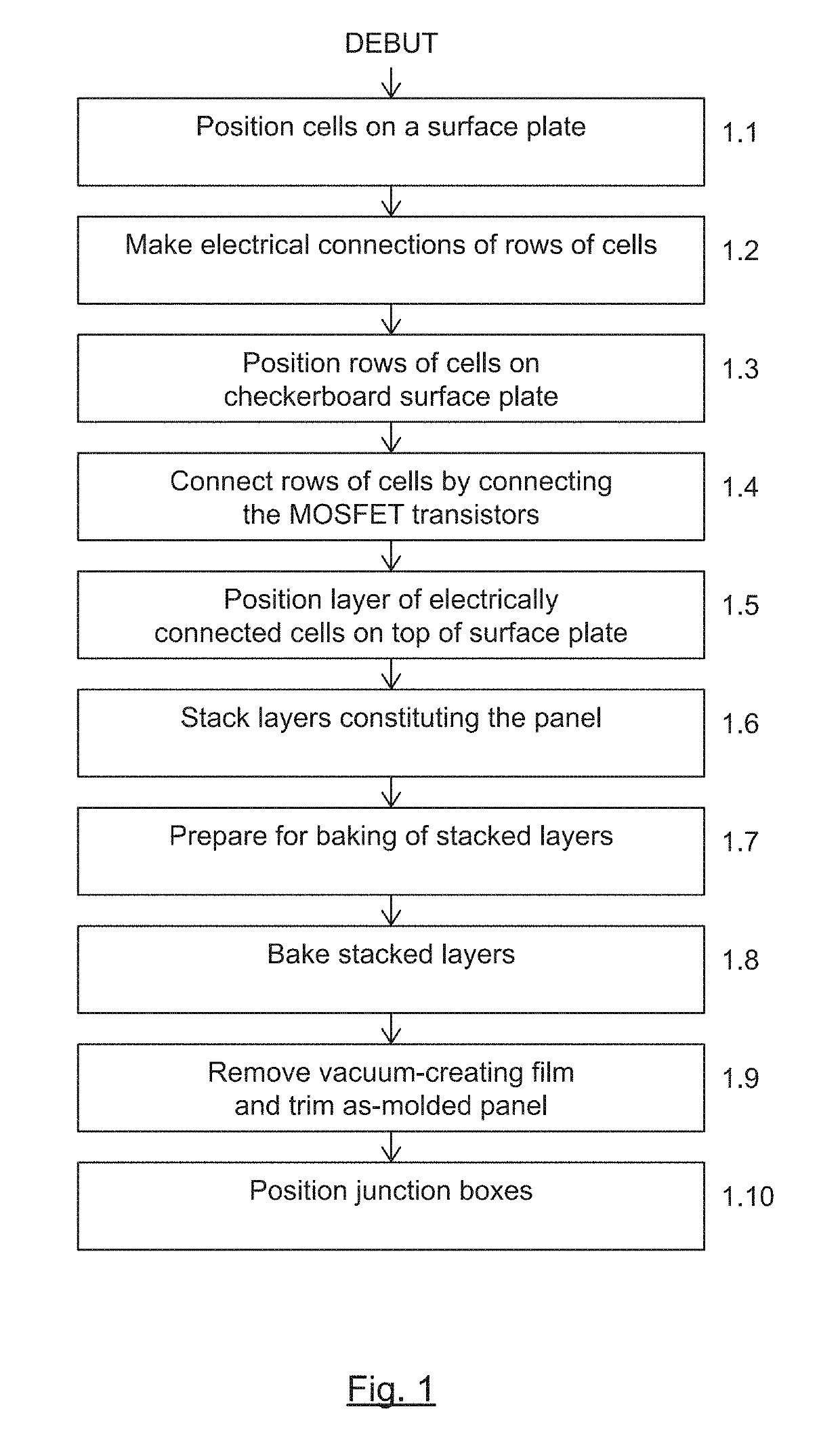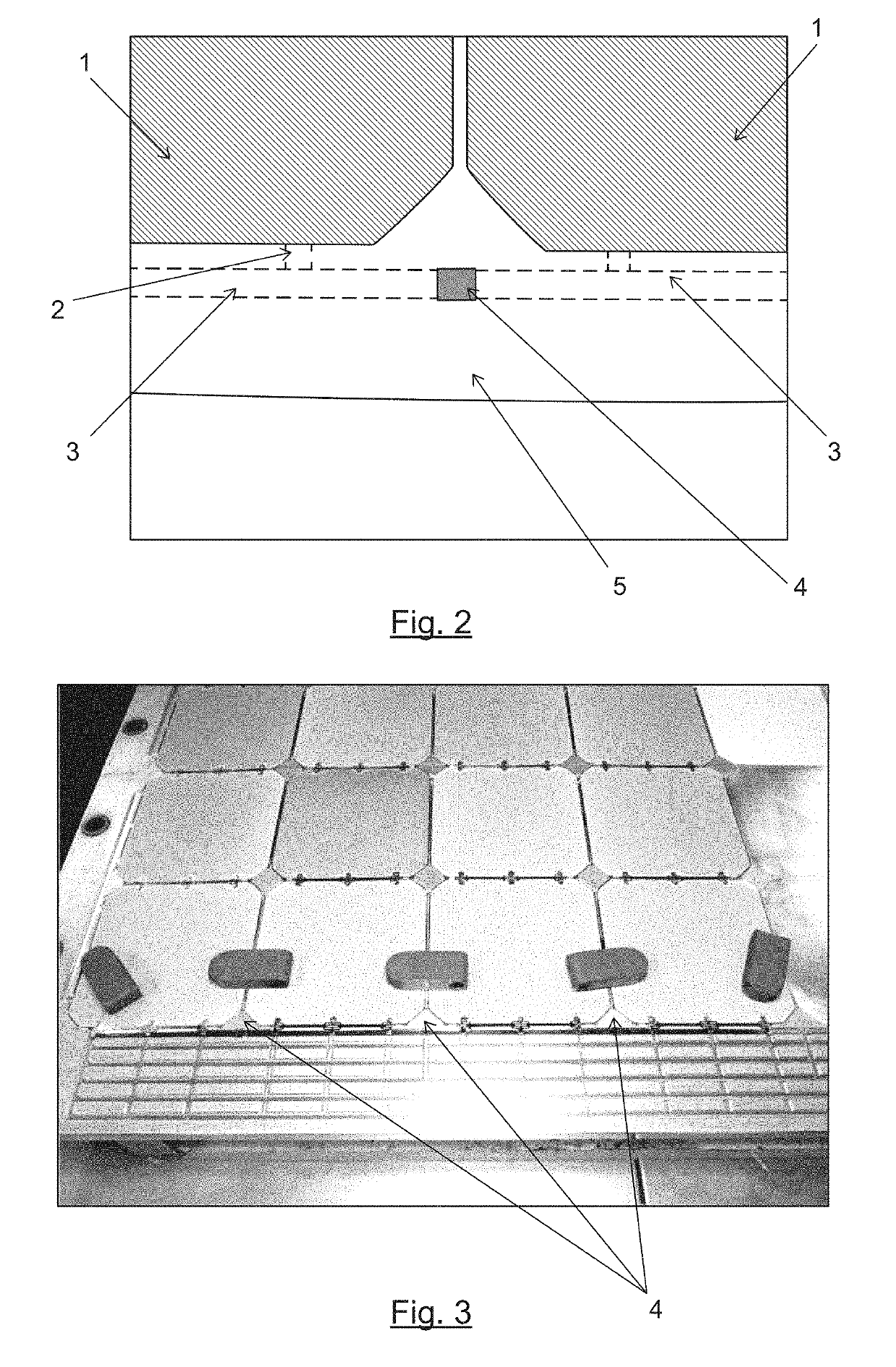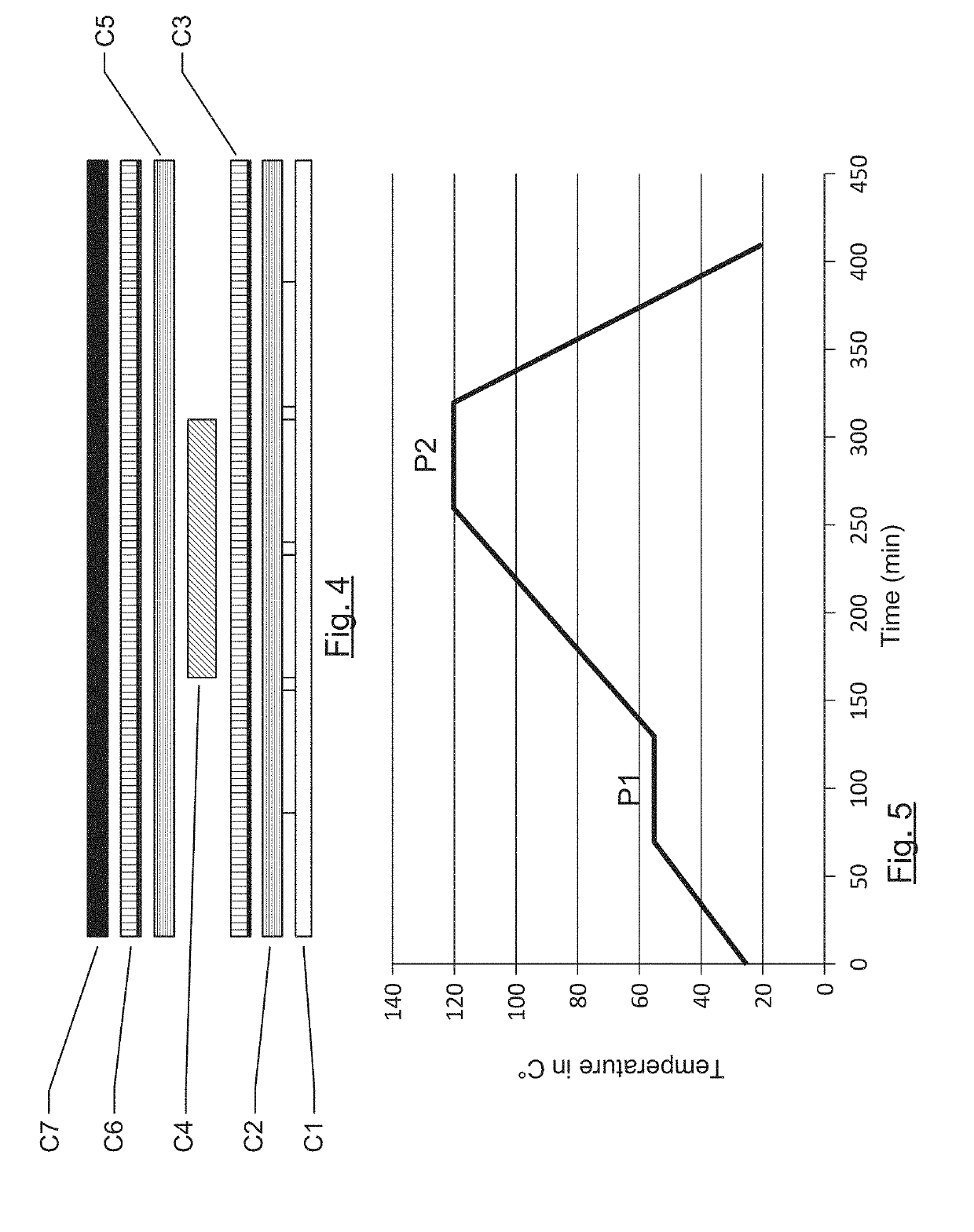Method for the encapsulation of photovoltaic panels in using pre-impregnated materials
- Summary
- Abstract
- Description
- Claims
- Application Information
AI Technical Summary
Benefits of technology
Problems solved by technology
Method used
Image
Examples
Embodiment Construction
[0054]In all the figures of the present document, the identical elements (or steps) are designated by a same numerical reference.
[0055]Referring now to FIG. 1, we present a sequencing of the steps illustrating a method of encapsulation of photovoltaic cells using composite and polymer materials, according to a preferred embodiment of the invention.
[0056]Solar panels comprise photovoltaic cells which need to be assembled and electrically connected to one another. These photovoltaic cells may be of the “front contact” type, meaning that the electrical connections are made on the front face (one polarity) and on the back face (the other polarity) of the cell or of the “back contact” type, meaning that the electrical connection is all made on the back face of the cell.
[0057]According to one preferred embodiment, the cell used is of the monocrystalline Sunpower type. The cell used may also be of the polycrystalline type. This cell, which is very efficient, is of the “back contact” type. ...
PUM
 Login to View More
Login to View More Abstract
Description
Claims
Application Information
 Login to View More
Login to View More - Generate Ideas
- Intellectual Property
- Life Sciences
- Materials
- Tech Scout
- Unparalleled Data Quality
- Higher Quality Content
- 60% Fewer Hallucinations
Browse by: Latest US Patents, China's latest patents, Technical Efficacy Thesaurus, Application Domain, Technology Topic, Popular Technical Reports.
© 2025 PatSnap. All rights reserved.Legal|Privacy policy|Modern Slavery Act Transparency Statement|Sitemap|About US| Contact US: help@patsnap.com



